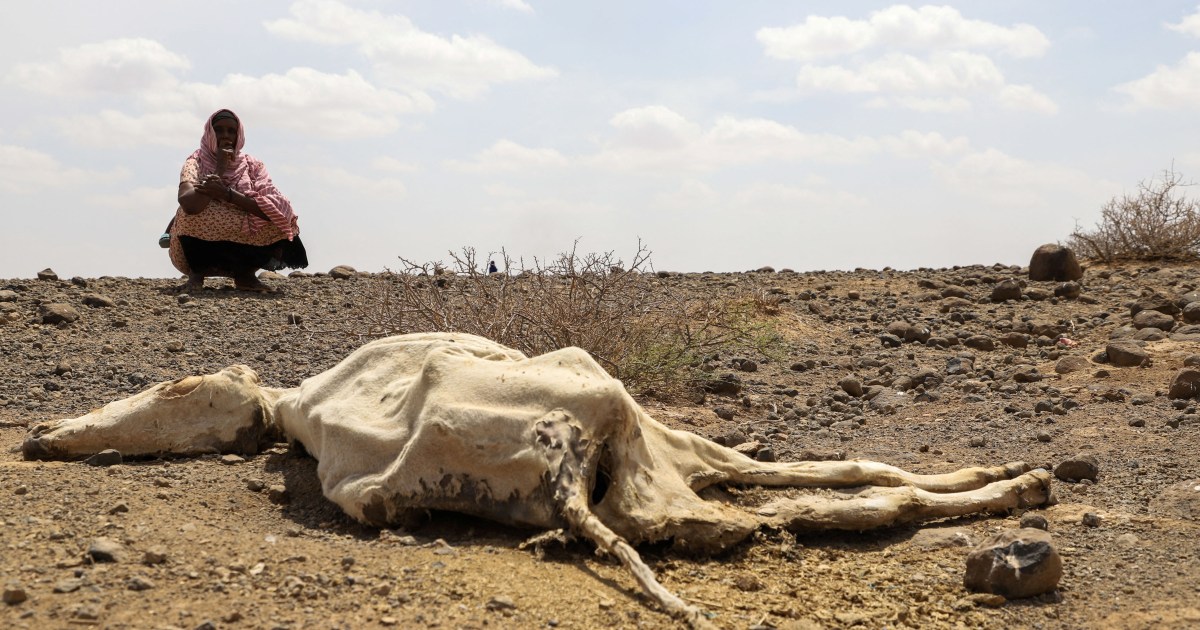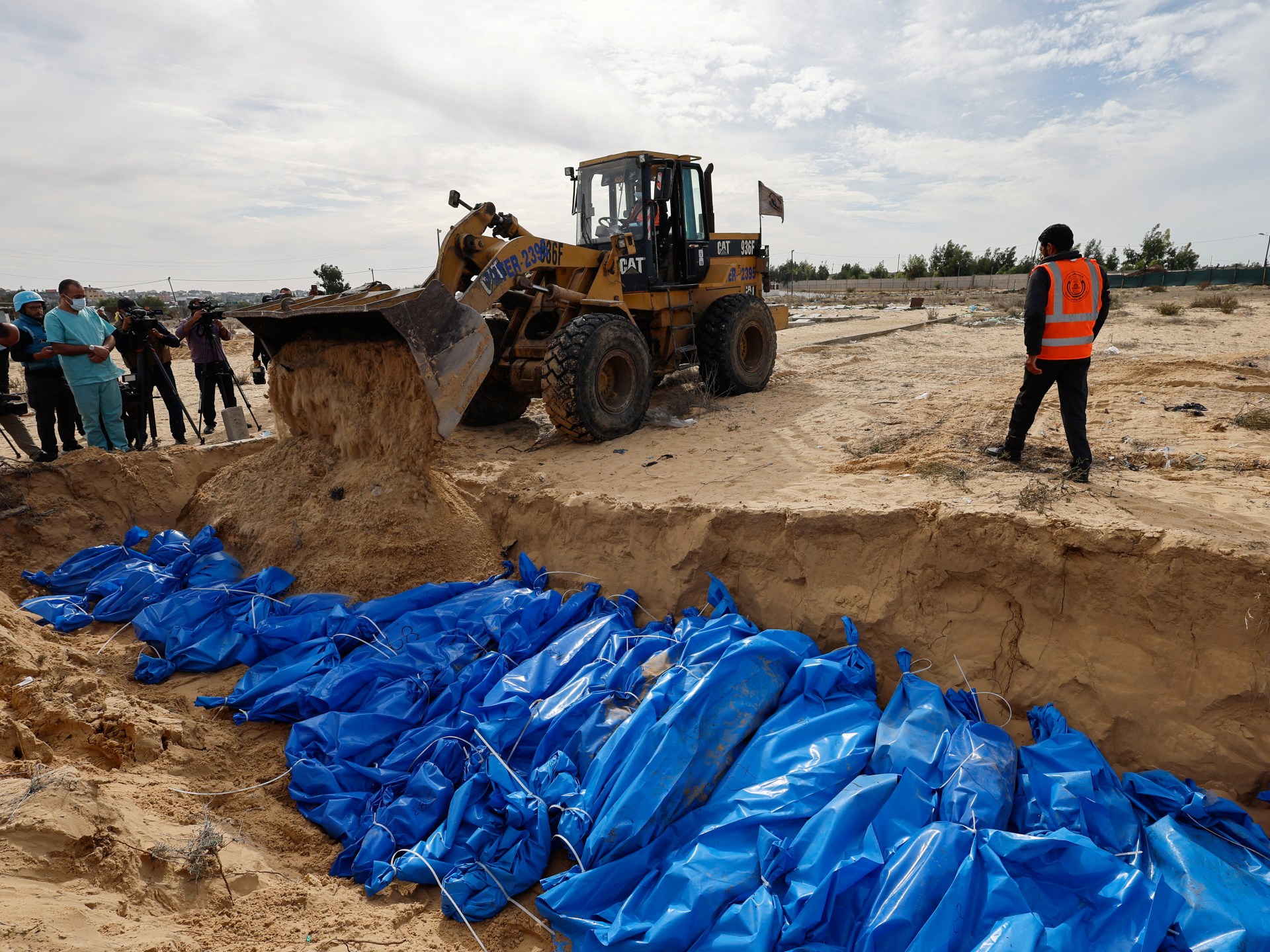Cyclone Remal slams into India, Bangladesh: What we know | Floods News
EXPLAINER
Nine people have been killed, as the cyclone, which made landfall on Sunday, now weakens and heads inland.
At least nine people were killed and more than a million were evacuated as Cyclone Remal approached the coasts of eastern India and Bangladesh, which made landfall late on Sunday.
Here is what we know about the cyclone.
Where did Cyclone Remal make landfall?
- The storm made landfall in the coastal regions of Bangladesh, near Mongla port, and the adjoining Sagar Islands in India’s West Bengal state with wind speed of up to 135kmph (84mph), according to the India Meteorological Department (IMD).
- Remal began to land at about 9pm in India (15:30 GMT) on Sunday, a process that continued for about five hours, according to the regional meteorological office in Kolkata.
- Remal was the first cyclone to hit the Bay of Bengal this year in advance of the June-September monsoon season.

What do we know about people killed by the cyclone?
- Seven people have died in Bangladesh’s Barishal, Satkhira, Patuakhali, Bhola and Chattogram, according to a news release by the Bangladeshi developmental organisation BRAC.
- Indian media reported that two people died in West Bengal due to the cyclone.
How did authorities respond to the cyclone?
- On Sunday, Bangladesh evacuated 800,000 people from nine coastal districts and port areas of Mongla and Chittagong.
- India’s Kolkata airport suspended operations on Sunday afternoon, cancelling 50 domestic and international flights.
- Volunteers were deployed to accommodate the evacuees in up to 9,000 cyclone shelters. Schools were also closed until further notice. About 150,000 people in India’s Sundarbans mangrove forest were evacuated inland.
- The Indian Coast Guard posted on X early on Monday that it was closely monitoring the landfall. “Ships, Hovercraft standby at short notice to respond to post-impact challenges,” the maritime security organisation wrote.
Update cyclone #Remal@IndiaCoastGuard is closely monitoring the landfall of cyclone #Remal with disaster response team, Ships, Hovercraft standby at short notice to respond to post-impact challenges. Follow official advisories, Stay informed and stay safe.#CycloneRemal… pic.twitter.com/WZlGMBgYtw
— Indian Coast Guard (@IndiaCoastGuard) May 26, 2024
- India’s National Disaster Response Force is clearing roads by removing trees that fell due to strong winds.
#CycloneRemal #Landfall
NDRF team cleared road due to fallen trees at Ganganagar behind Nimpith Ashram at Sagar Block amid rains and gusty winds.#आपदा_सेवा_सदैव_सर्वत्र@HMOIndia @BhallaAjay26 @PIBKolkata@PIBHomeAffairs@2_ndrf pic.twitter.com/Vg7arrlCyt— NDRF 🇮🇳 (@NDRFHQ) May 26, 2024
What other effect has the cyclone had?
- Several trees were uprooted, houses damaged and island villages were flooded.
- Protective embankments in the Sundarbans Delta, shared by India and Bangladesh, were also breached and damaged by high tides. An embankment is a wall built to prevent flooding in an area.
- People from the Rohingya community in Myanmar, who have fled to seek refuge in Bangladesh’s Cox Bazar, are especially vulnerable since their shelters are made of unsound structures such as tarpaulin or bamboo.
Did Remal cause a power outage?
- Millions do not have electricity in the affected areas after authorities cut power supply to avoid accidents. Fallen trees and structures further disrupted power lines.
- Within an hour of landfall, there were reports of damaged transformers and at least 356 uprooted electricity poles, according to West Bengal Power Minister Aroop Biswas.
Is climate change intensifying cyclones in South Asia?
- Cyclones are a very complex type of natural disaster, making their trends hard to quantify.
- Cyclones have decreased in frequency over the years, and a report by the NASA Center for Climate Simulation postulates that the number of tropical cyclones will decrease in the future due to a warming climate.
- However, more intense cyclones are anticipated to rise in the northern Bay of Bengal, affecting India, Bangladesh and Myanmar, due to rising temperatures, the NASA report from February 2024 predicts.
Where is Cyclone Remal now?
- The IMD posted on X on Monday at 11:43am (06:13 GMT) that the cyclonic storm is about 40km (24.9 miles) northwest of Bangladesh’s port Mongla, 90km (56 miles) east of Kolkata and 90km northeast of West Bengal’s Canning.
Cyclonic Storm Remal over Coastal Bangladesh and adj Coastal West Bengal is about 40 km northwest of Mongla, 90 km east of Kolkata, 90 km northeast of Canning. System is initially likely to move north-northeastwards, subsequently northeastwards and gradually weaken further. pic.twitter.com/uk78IgVnXJ
— India Meteorological Department (@Indiametdept) May 27, 2024
- On Monday morning, the cyclone weakened to a cyclonic storm, with a wind speed of about 80-90kmph (50-60mph).
- The Kolkata airport and Indian Railways have also resumed operations.
- However, India’s National Disaster Management Authority (NDMA) has not yet posted an update confirming that it is safe to go out in vulnerable areas.
- An NDMA bulletin on Sunday advised residents in affected areas to remain indoors.
Where is Cyclone Remal likely to move next?
- The IMD post added that the cyclone is likely to initially move “north-northeastwards” and then move northeastwards, inland, before gradually weakening further.




